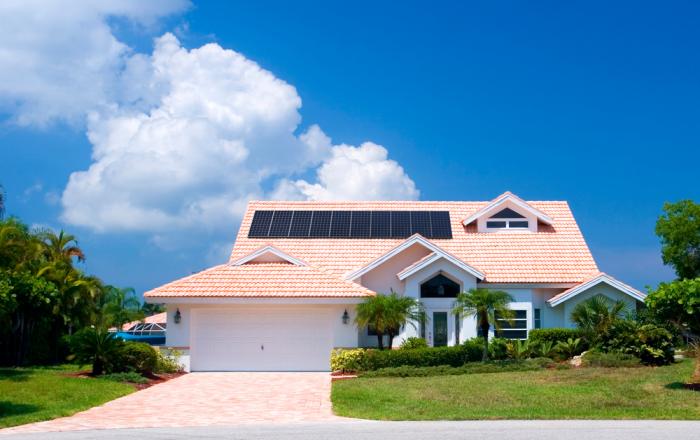
When determining which places are the most accommodating for solar energy, your first thought may linger on where the sun shines most. And while that approach is certainly valid, there’s a lot more to consider than just the weather.
States like Arizona, Texas, California, Nevada and Florida are considered some of the sunniest places in the nation. And the major cities within them also happen to have a large amount of solar PV installed. Many homeowners in these areas have learned that solar panels are a great asset when it comes to cutting rising utility bills. They also aren’t strangers to extreme weather conditions like wildfires and even freezing temperatures.
Solar power can provide reliable clean energy during times like these when it’s needed most. As homeowners produce their own power it helps create a more resilient electrical grid, especially when the demand for power is high. These factors alone can make alternative energy sources attractive, but what else makes a certain location solar friendly?
Shining Cities is an annual report conducted by the Environment America Research & Policy Center. The study looks at the total amount of solar power installed per person in America’s largest cities. The top nine named shining cities of 2022 were found to have more solar power than the entire United States just 10 years ago. This alone illustrates the rapid growth of solar adoption and the positive trend doesn’t look to be slowing down.
The Solar Energy Industries Association (SEIA) found that solar power accounted for 46% of all new U.S. electricity-generating capacity in 2021. This is the third year in a row that solar power made up the largest share of new capacity. Part of this growth is due to effective solar policy, including the solar federal tax credit (ITC) that provides qualified homeowners who purchase solar with a tax credit on a percentage of the cost of their home solar system.*Tax credits subject to change. SunPower does not warrant, guarantee or otherwise advise its partners or customers about specific tax outcomes. Consult your tax advisor regarding the solar tax credit and how it applies to your specific circumstances.
Public policy plays an important role in determining which states will be more likely to adopt renewable energy. For example, California has been a leader in green building for many years. The implementation of the Title 24 energy code has made quite an impact on the rapid growth of rooftop solar.
In 2020, the Golden State’s Title 24 energy code began requiring that all new homes include solar panels. This includes multifamily units like condos, townhomes and duplexes that are three stories high or less. Initiatives like this are keeping California at the forefront of the clean energy revolution. In fact, it recently broke a significant record. On April 30, the state’s demand for electricity was 100% matched by renewable energy generation for the first time in history. Clean energy, with solar generating the majority of power, provided all the state’s energy needs for approximately fifteen minutes.
Some of the best locations for solar energy are areas where effective solar policy is active. That’s why SunPower has a policy and strategy team that works with local and national governments to keep solar affordable and accessible to homeowners everywhere. But it truly doesn’t matter where you choose to go solar. The ability to enjoy the benefits of clean energy is available to everyone from fostering better air quality to reducing utility costs.

